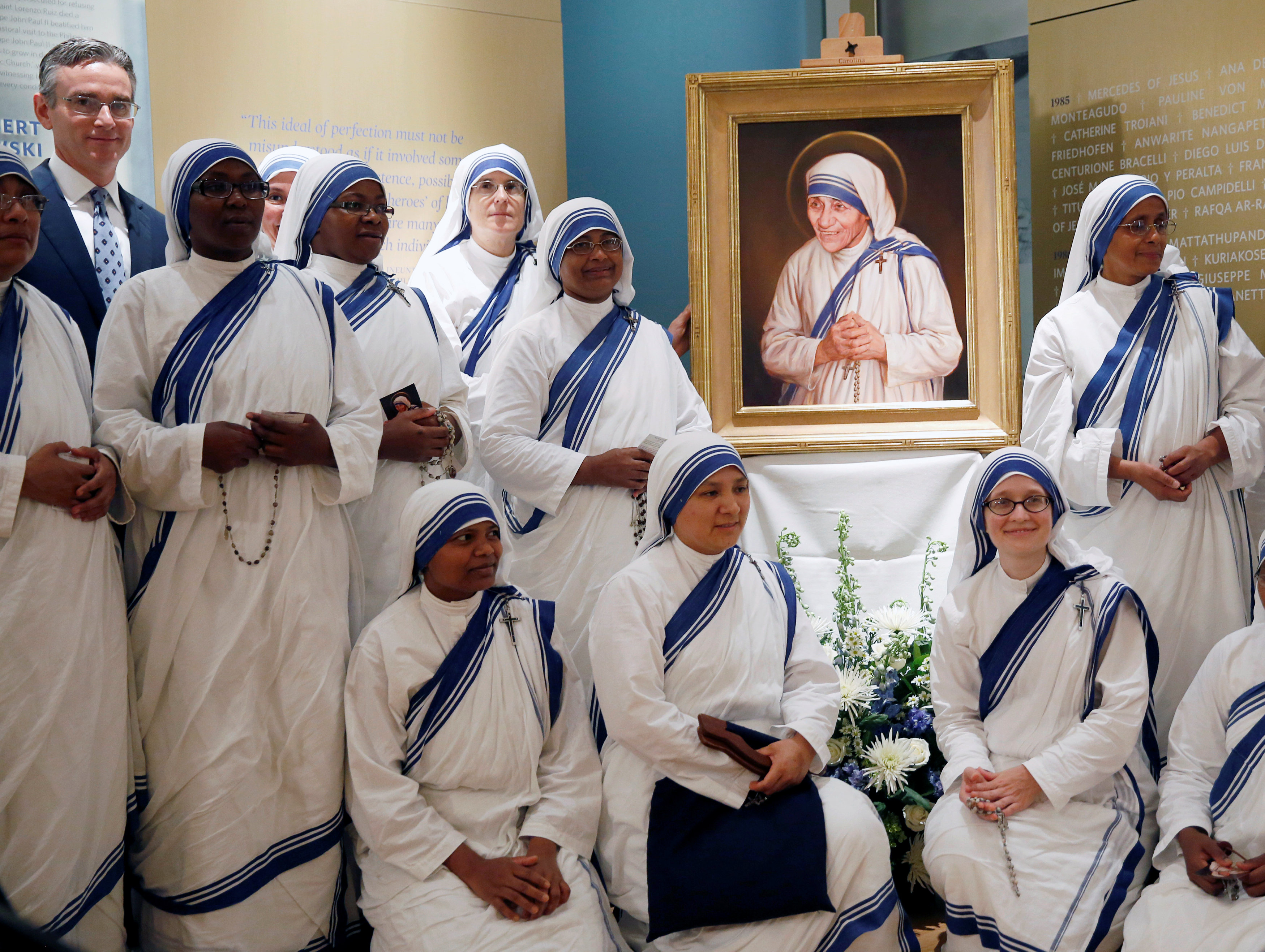VATICAN CITY (Reuters) – The canonization of Mother Teresa of Calcutta on Sunday will be the culmination of a process – sometimes called “the saint-making machine” – that is long, complex, expensive, opaque and often contentious.
The Catholic Church posthumously confers sainthood on people considered so holy during their lives that they are now believed to be with God and can intercede with him to perform miracles. Such is the status of the nun acclaimed for her work in the slums of the Indian city now known as Kolkata.
But the path to sainthood is often more bureaucratic than beatific.
Mother Teresa died in 1997 and the late Pope John Paul, who met her often, bent Vatican rules to grant a dispensation allowing the procedure to establish her case for sainthood to be launched two years after her death instead of the usual five.
He had even considered making her a saint immediately but cardinals convinced him that it would set a dangerous precedent for the future, even though in the early Church people were acclaimed saints upon their death.
The current process, known as a “cause”, begins at the local level when a diocese believes that someone in their community lived a saintly life. When it is formally open, he or she get the title “Servant of God.”
The postulator, in this case Canadian priest Father Brian Kolodiejchuk, sends voluminous documentation to the Vatican, where its Congregation for the Causes of Saints assigns it to a “relator”. The relator oversees it, and together with theologians, recommends if it is worthy enough to continue.
If it does, the candidate gets the title “venerable”. The next step is beatification. This requires a miracle, which is usually the inexplicable curing of a sick person.
The first miracle attributed to Mother Teresa, and which allowed the Church to beatify her, concerned an Indian woman, Monica Bersa, whose stomach tumor is said to have disappeared after she and others prayed to the nun in 1998, a year after Mother Teresa died.
A medical commission working with the Vatican reviews each case to decide if there is any known medical explanation for the healing.
MIRACLE OR MEDICINE?
Critics, such as the late atheist writer Christopher Hitchens, who made a documentary called “Hell’s Angel” on Mother Teresa, say the system is flawed. One of the doctors who treated Bersa at the time, Ranjan Mustafi, told Indian media the healing was a result of treatment.
After beatification, which for Mother Teresa was in 2003, a second miracle is required in order for the cause to move on to sainthood.
This involved Brazilian Marcilio Andrino, who the Church says unexpectedly recovered from a severe brain infection in 2008 after his family prayed to Mother Teresa.
The saint-making process has not been immune to corruption and mismanagement, with accusations that the system allowed for favoritism for causes with rich backers.
The conservative Opus Dei group was accused of using its considerable financial clout to push for the canonization of its founder, Father Josemaría Escrivá de Balaguer, who was declared a saint in 2002.
In 2015, a commission looking into Vatican finances found that the Vatican’s saint-making office had little or no documentation of funds used by postulators. According to a Vatican source, the Vatican bank in 2014 froze about a million euros in suspect funds held by postulators.
Kolodiejchuk said the cost of Mother Teresa’s sainthood cause – gathering documentation, interviewing witness, paying lawyers – came to less than $100,000 – very low compared to the cost of some canonizations in the past.
He said it was covered mostly by a single anonymous donation, that costs were contained because member of the Missionaries of Charity worked for free and that no contributions destined for the poor were diverted
Last year, Pope Francis made key changes to the financial side of saint-making with a decree ordering new controls on its costs and demanding more vigilance and transparency at each stage.
It stipulates that contributions from the faithful and groups must go into an account managed by an administrator who must “scrupulously respect the intentions” of contributors, keep detailed documentation, and present budgets to a superior.
(Reporting By Philip Pullella; editing by Ralph Boulton)
Copyright 2016 Thomson Reuters. Click for Restrictions.



